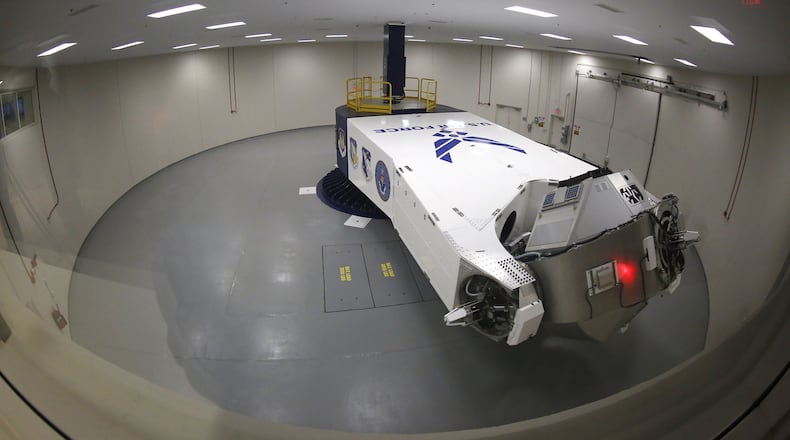The nearly five-minute video is filled with high-tech computer animation coincided with its first public meeting at the University of Nebraska last week asking for public input into the technologies the Air Force should pursue in the future.
RELATED: Top Air Force leader to grads at Wright-Patt: ‘Our nation needs you desperately’
Your ideas can shape the United States Air Force of tomorrow. #AF2030 www.afresearchlab.com/2030
Posted by Air Force Research Laboratory - AFRL on Thursday, March 22, 2018
The listening tour has public events across the county, from Florida to Washington state, through the summer. The closest stops to Dayton were set for Indianapolis and Cincinnati.
RELATED: Top Air Force leader says total dominance not a ‘birthright’
Air Force researchers have in recent years focused top priorities on developing aircraft and missiles that travel at hypersonic speeds, autonomy in machines-like drones, and directed-energy weapons such as airborne lasers and microwave-zapping missiles, but AFRL Chief Technology Officer Morley O. Stone said in a Dayton Daily News interview in January the goal is to go beyond that.
“We are not moving fast enough, not only with the world around us, but we’re not moving fast enough with the way potential adversaries are looking at and adopting technology,” Stone said.
AFRL is headquartered at Wright-Patterson Air Force Base and home to four of nine of its directorates: Aerospace Systems, the 711th Human Performance Wing, Materials and Manufacturing, and Sensors.
RELATED: ‘We’re not moving fast enough,’ Air Force leader says
The video highlights many of the breakthroughs or future tech worked on at Wright-Patterson, including a suit with wearable technology that monitors blood pressure to breathing; a potential sixth-generation fighter, called F-X or Penetrating Counter Air, which uses a laser to destroy another fighter; and swarms of mini-drones that break off a parachuting launching platform and spiral to earth after being pushed out of a C-130 aircraft.
X-planes in the skies of the 1940s to the X-37, an unmanned mini-space shuttle-like vehicle launched inside a rocket capsule for long-endurance missions, also gain attention in the video.
About the Author
